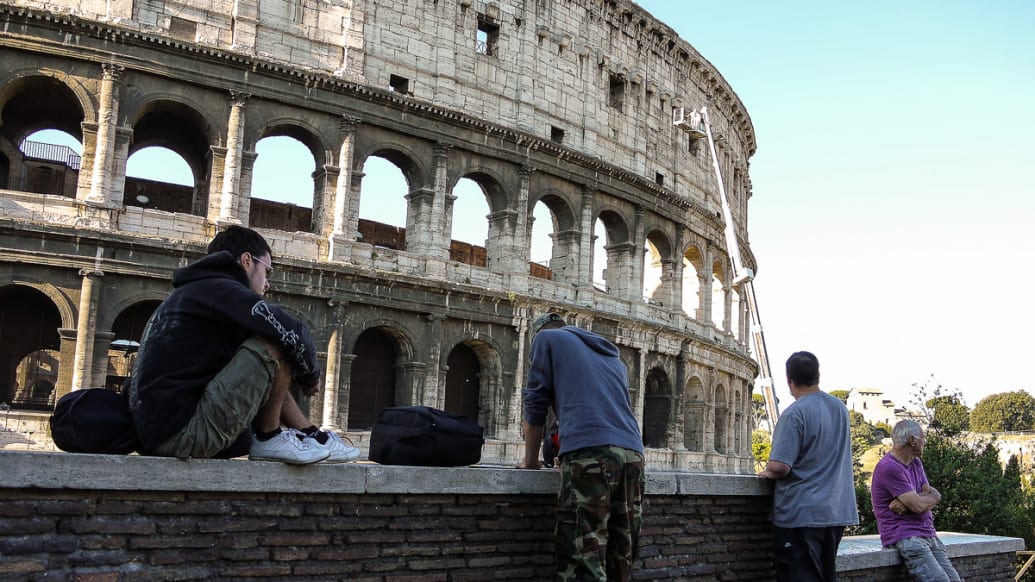Italy’s economy may be on the verge of collapse, but that’s not all that’s falling apart in the country. For the last several months, chunks of marble have been plummeting from the Colosseum, ancient walls have been reduced to rubble and even bits of the baroque Trevi Fountain have crumbled, changing forever the face of that illustrious monument. And that’s just in Rome.
In Naples, the Royal Palace has fractures in its façade and once-glorious fountains in the city’s squares are covered in graffiti. Pompeii is at risk of becoming a wasteland as its ruins disintegrate to dust due to lack of maintenance. In Emilia Romagna, important churches and clock towers damaged in a series of springtime earthquakes will never be repaired. There simply is no money left in Italy’s tightened budget to take care of the country’s cultural heritage.
Austerity measures to combat Italy’s stifling public debt and save the country from default has meant there is little money left over for anything but the bare necessities. But the bigger problem is that basic maintenance on many of the country’s cultural gems has been neglected for years. Recent budget cuts are just the last nail in the sarcophagus. In reality, the culture budget has been the first to be cut for the last several years. A full third—€1.42 billion—has been slashed from the culture budget in the last three years, meaning vital maintenance on some of the country’s most important monuments was never carried out.
“Maintenance does not exist for many of Italy’s most important sites,” center-right senator Diana de Feo told The Daily Beast. “How many more collapses will it take to make it a priority?”
Already, many of the country’s most important monuments have been adopted by private sponsors who are footing the bill. Vital restoration of the ancient Roman Colosseum will begin in 2013, thanks to a €25 million contribution from Tod’s shoe magnate Diego Della Valle. Other monuments, such as Rome’s Trevi Fountain, are up for grabs as the city looks for a savior with a spare €2.5 million to help fix serious fissures caused by below-normal temperatures in Rome that caused the monument’s water to freeze last winter. The city also is hoping someone will help fund a €75 million restoration of the Aurelian walls, which circle the city.

Umberto Broccoli, superintendent of Rome’s Culture Ministry, says the race is on to save the city’s treasures. On his culture blog, he has pleaded that official funds just won’t be enough to both fix the falling structures and prevent more from tumbling down. “We must focus on preservation, but we need money to carry out surveys. In Rome, the stones may have a hundred or a thousand years. We can no longer delay the work.” He says the city will have to resort to selling advertising on building scaffolding to raise funds, even if it means giant posters on churches, monuments, and ancient ruins.
The country also is trying to raise funds by selling off about 350 historic buildings in Rome, Milan, and Venice. About €40 billion worth of prime real estate is up for grabs, including the historic Casina Valadier in Rome and the opulent Palazzo Diedo on Venice’s Grand Canal. Italy’s public real-estate assets are worth more than €600 billion, according to the government’s website, and technocratic Prime Minister Mario Monti has suggested that selling off some of the country’s assets could help offset public debt.
The cultural watchdog group Italia Nostra is against the sale of any public property, especially if it could go to developers who might turn buildings into restaurants or shopping malls. Italia Nostra’s vice president, Nicola Caracciolo, has launched a campaign to not sell historic structures, but to repurpose them or refurbish them to their original glory. He says they should not be sold and separated from their context. “These buildings not only have artistic value, but as a whole make up our landscape and urban environment,” he says. “Not to mention the beauty of our cities, their real wealth that cannot be alienated.”
In late August, 30 feet of the 19th-century Pincio wall in Rome’s Villa Borghese collapsed—not far from the Casina Valadier, a historic building that is up for sale by the city. If a private investor owned the structure, he or she may have noticed the fissures that caused the collapse and repaired them before the collapse. But as long as Italy can’t afford to maintain its vast wealth of cultural heritage, more structures face the inevitable fate of becoming just another ruin.

